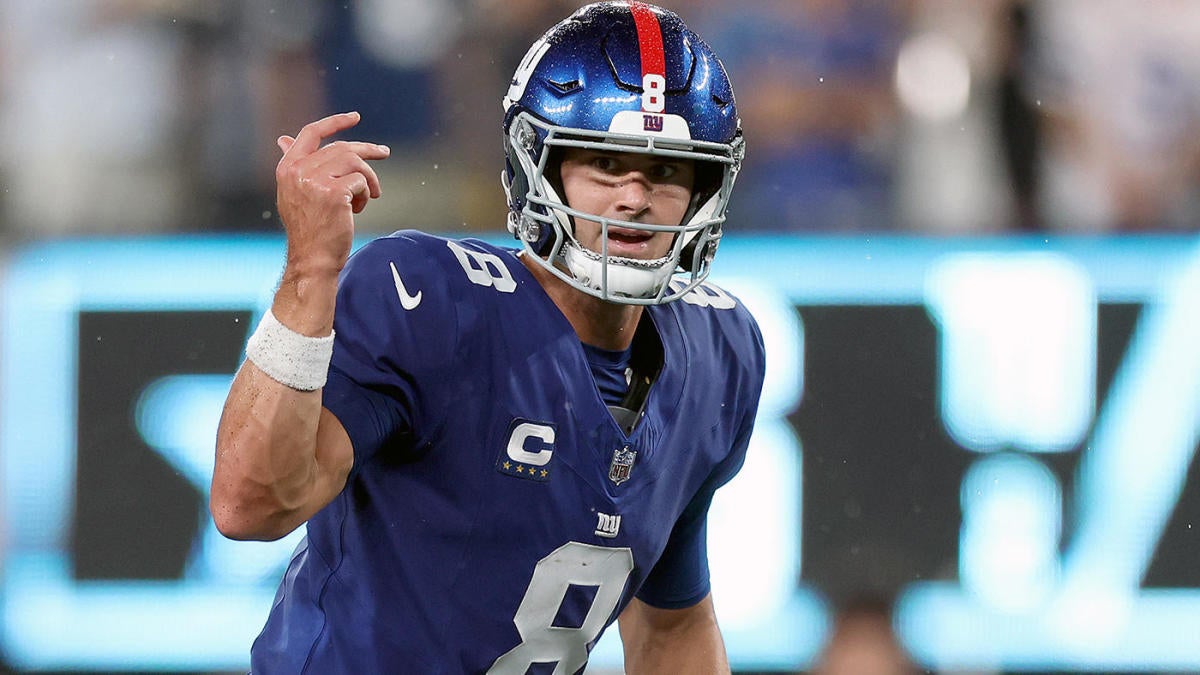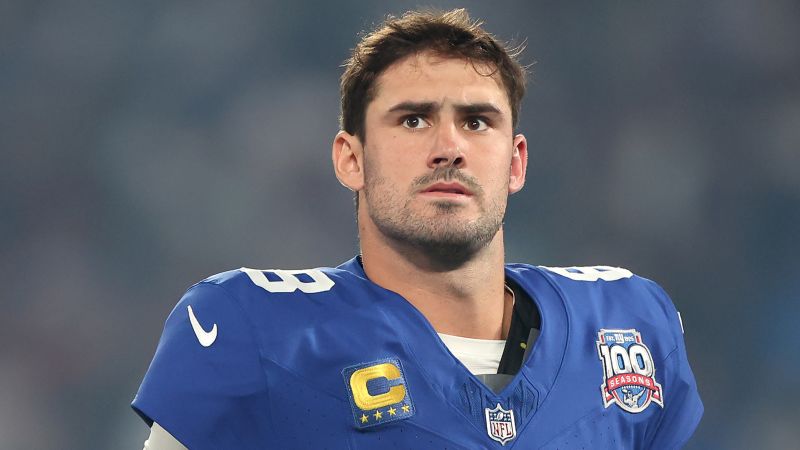Basketball
How could the Knicks deploy Karl-Anthony Towns?

Two years before trading him away, the Minnesota Timberwolves rearranged life for their All-NBA big man.
A 2022 deal for Rudy Gobert, much maligned in its aftermath, wasn’t just about acquiring a behemoth who could prop up a defense all on his own. It also was about the man playing next to him, Karl-Anthony Towns, who is soon to be the newest member of the New York Knicks.
After years of Towns mostly playing center, Minnesota settled on a new role for him. Towns, towering at 7 feet, may be the size of a five. He may be smooth in the post with footwork that defenders can’t speed up, a screener capable of pulverizing helpless twigs who have the audacity to try veering around him. He has never been an ideal matchup guarding stretchy, small-ball forwards. But he also can’t anchor a defense the same way as Gobert, a four-time NBA Defensive Player of the Year.
So with the addition of a second skyscraper, the Timberwolves morphed their identity — and also flipped that of Towns. For the first time as a pro, Towns would play most of his minutes alongside a player with more center-esque traits than he.
But with a new home comes new surroundings. The Knicks’ trade for Towns, which they and the Wolves agreed to Friday and which will send Julius Randle and Donte DiVincenzo to Minnesota, begs the question: How does New York plan to optimize him?
GO DEEPER
5 things Karl-Anthony Towns must do to succeed with the Knicks
Will the Knicks be at their best with Towns at the epicenter of a five-out offense, or might they prefer a configuration similar to what the Timberwolves used over the past two seasons, sliding Towns to power forward and beginning games with a rim protector alongside him?
Surely head coach Tom Thibodeau had given this thought before reports hit the public Friday night. Despite a relationship with Towns that had frayed by the end of his time in Minnesota, where Thibodeau ran the Wolves from 2016 to 2019, Thibodeau wanted this trade, as The Athletic reported shortly after the two sides agreed.
One character is a passionate X’s and O’s addict with an in-game vocabulary that spans from defensive coverages to four-letter words. The other is a more easygoing cat. But sources close to Thibodeau have insisted since long before this trade went down that despite how it ended in Minnesota, he would be excited about a reunion with the four-time All-Star.
Personalities aside, how might it look on the court? With the trade not yet official, thanks to an absurd series of financial logistics that have nothing to do with basketball, the world is left to guess.
Come the start of preseason play, we’ll receive an idea of sets the Knicks want to run for Towns, of substitution patterns, of defensive schemes they will implement with new personnel not just at center but also on the wing, where Mikal Bridges joins the melee. But the greater organizational plan will linger.
Do the Knicks believe they have their best chance to win a title with Towns alongside a rim protector or with their crew of elite defensive wings insulating him as a center?
The opening-day starters are obvious. Towns and Jalen Brunson are both All-NBA performers. Bridges and OG Anunoby make up one of the most stifling duos on anyone’s perimeter. Josh Hart is ready to break the laws of mathematics and play 57 minutes in a regulation game.
There’s your five.

GO DEEPER
Edwards: Karl-Anthony Towns doesn’t undoubtedly make Knicks better
But let’s say, for the sake of argument, that Mitchell Robinson — who is out until at least December (and that’s the optimistic timeline) — returns in the same form he showed off to begin last season, when he took over as the NBA’s best offensive rebounder and one of its most-disruptive defensive centers. What would the Knicks do then?
Robinson could come off the bench. Or maybe, with a coach who goes to bed and wakes up thinking about rim protection and dreams about it during the time between, he could displace Hart in the first unit.
Of course, Robinson’s health is a question, even once he’s cleared to play. He didn’t look the same after returning from ankle surgery in March. Now, he’s undergone another.
The Knicks are not married to him long-term. And as close as this roster is to all in, they still have Robinson’s salary, which they can pair with Precious Achiuwa come the deadline to trade for a player who makes more than $20 million. They could send out first-round pick swaps in 2026 and 2030.
That’s not landing the Knicks a third All-Star, but it can get them something.
Maybe something will be bench help on a team whose greatest strength was its depth, yet now has second-unit uncertainty. Miles “Deuce” McBride is the sixth man. Achiuwa will play. But in spite of the low-hanging jokes about Thibodeau, the Knicks won’t play a seven-man rotation during the regular season.
With Robinson hurt, who snags the last two spots?
Does Landry Shamet, who’s not on a guaranteed contract right now, sneak in? Will one of Tyler Kolek or Cameron Payne take the other spot? Could Jericho Sims show up much improved and tiptoe into a 15-minute role?

GO DEEPER
Katz: What’s next for Knicks after Karl-Anthony Towns trade?
How the Knicks configure their bench lineups will be a storyline all season. How do they grease the wheels without any reserve wings? Does Thibodeau stagger Brunson and Towns, two offensive engines, so that at least one is on the court at all times? If so, could he pair Towns’ minutes with Anunoby’s to give the big man a weak-side helper on defense? Thibodeau used Anunoby with the second unit at the end of last season. Maybe the trend continues.
Could the coach prefer to keep Towns and Brunson together, as he did with Brunson and Randle? In that case, Bridges could be the one to run the reserves. The Brunson-Towns dynamic has a chance to become special. One is a dead-on shooter and master of footwork in the post and the other is … a dead-on shooter and master of footwork in the post. Not since arriving in New York has Brunson operated with so much space. It’s unprecedented, too, for Towns, who can bully weaker defenders in the post.
Guarding those two in a pick-and-roll will require Dramamine.
Towns can dive to the basket. He can pop to the 3-point arc. He’s a 40-percent career shooter from deep. Watch for him to set picks, especially far beyond the 3-point arc. Only a handful of pick-and-roll duos in the league have both a ballhandler and a screener who can pull up from 28 feet. The Brunson-Towns pairing is one of them.
Imagine the nervous breakdowns those two will induce in the couple of defenders who have to guard them so far from the hoop. Imagine how the other three opponents react, eyeing two All-Stars and potentially drifting their way, which would open up corner 3-point shooters in Bridges and Anunoby.
Never before have the Knicks forced defenses to cover this much ground.
But maybe they won’t deem leaning into their best offensive unit worth it — because there is another side of the court.
Towns is not as flawed a defender as his reputation would have you believe. He does not guarantee his team a downtrodden defense. Minnesota led the league by a landslide in points allowed per possession last season. Yes, the Wolves were loaded with length on the wings, physicality off the bench and the Defensive Player of the Year at center. But it’s not like Towns needed Gobert to avoid disaster.
With Towns on the court and Gobert off last season, the Timberwolves defense was still in the 91st percentile in points allowed per possession, according to Cleaning the Glass.
Towns is strong down low and can hold his own one-on-one against even the most brute centers, no better exemplified than when he manned three-time MVP Nikola Jokić during a second-round series that knocked out the then-defending champs this past spring.
Minnesota used Gobert as a helper in those scenarios. If Jokić spun into the lane, the league’s most proficient rim protector was there to meet him. The Knicks could try similar tactics with Anunoby, who isn’t as big as Gobert but is one of the savviest off-ball defenders in existence. Of course, it would be even more effective with Anunoby and either a healthy Robinson or another rim protector of Robinson’s ilk.

GO DEEPER
Karl-Anthony Towns’ impact in Minnesota goes much deeper than basketball
New York could win a title with Anunoby and Bridges, a point-of-attack pest, along with Hart’s unhinged energy holding up the defense. They also could reach the later rounds of the playoffs and hit life support once Towns gets into foul trouble because he’s defending too much with his hands and not enough with his feet, or because opponents target him and Brunson in pick-and-rolls.
These are a rich man’s problems, but standards have changed. The quest is no longer to win 50 games or make a scrappy run to the second round. The Knicks want to win a title.
Placing Towns next to a Robinson type, even if it’s not actually Robinson, would not just slide their newest gem to the four. It also would move everyone else a position up. All of a sudden, the Knicks would boast the league’s largest starting lineup, with never-ending length at the two big positions and a couple of massive wings, Anunoby and Bridges, to engulf the perimeter. In some ways, it would be a facsimile of what Minnesota pulled off a season ago, all the way down to the heady, veteran point guard who is always in the right place but has physical limitations — Brunson, because of his size, and Mike Conley Jr., because of his age.
The Knicks have time to evaluate, and this front office has a habit of pulling rabbits out of its hat. Not all rim protectors clog up the paint on offense the same way Robinson or Gobert does. If the Knicks have the chance to trade for a shot blocker who also could step away from the hoop, chances are they would.
But the pieces that remain make it more likely that their trade deadline options will be imperfect.
A rim protector who doesn’t shoot, or a shooter who doesn’t defend? Or a wing qualified to be an eighth man but not more? Or an old reliable who is a B-minus across the board without any A’s?
The choice could be to hold onto Robinson. As recently as a year ago, he was an essential piece, a starting center other teams feared around the basket on both sides. But if they do, they will need to decide on his role, a process that could have more to do with Towns than it does to do with him.
(Top photo: Kathryn Riley / Getty Images)










